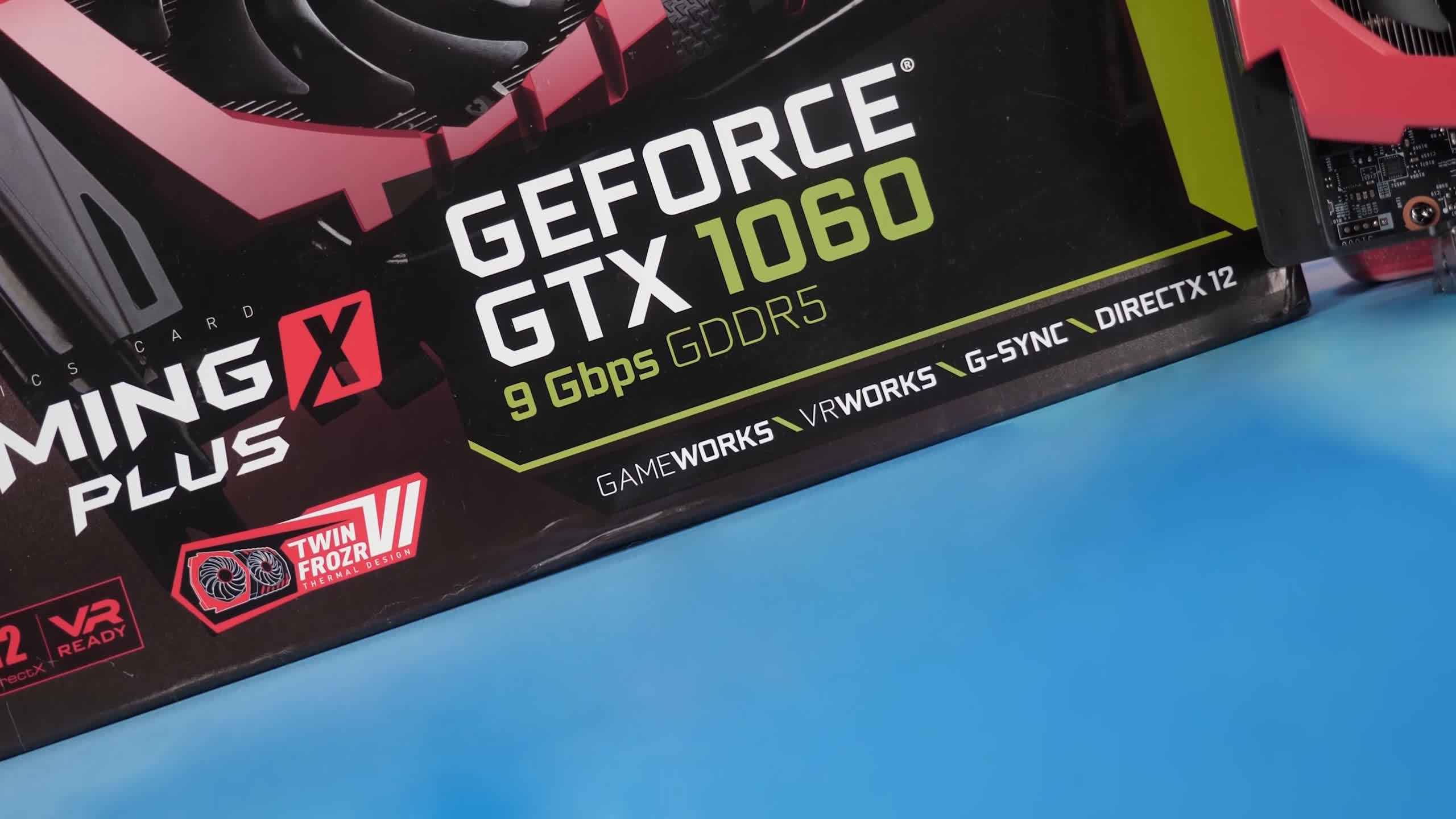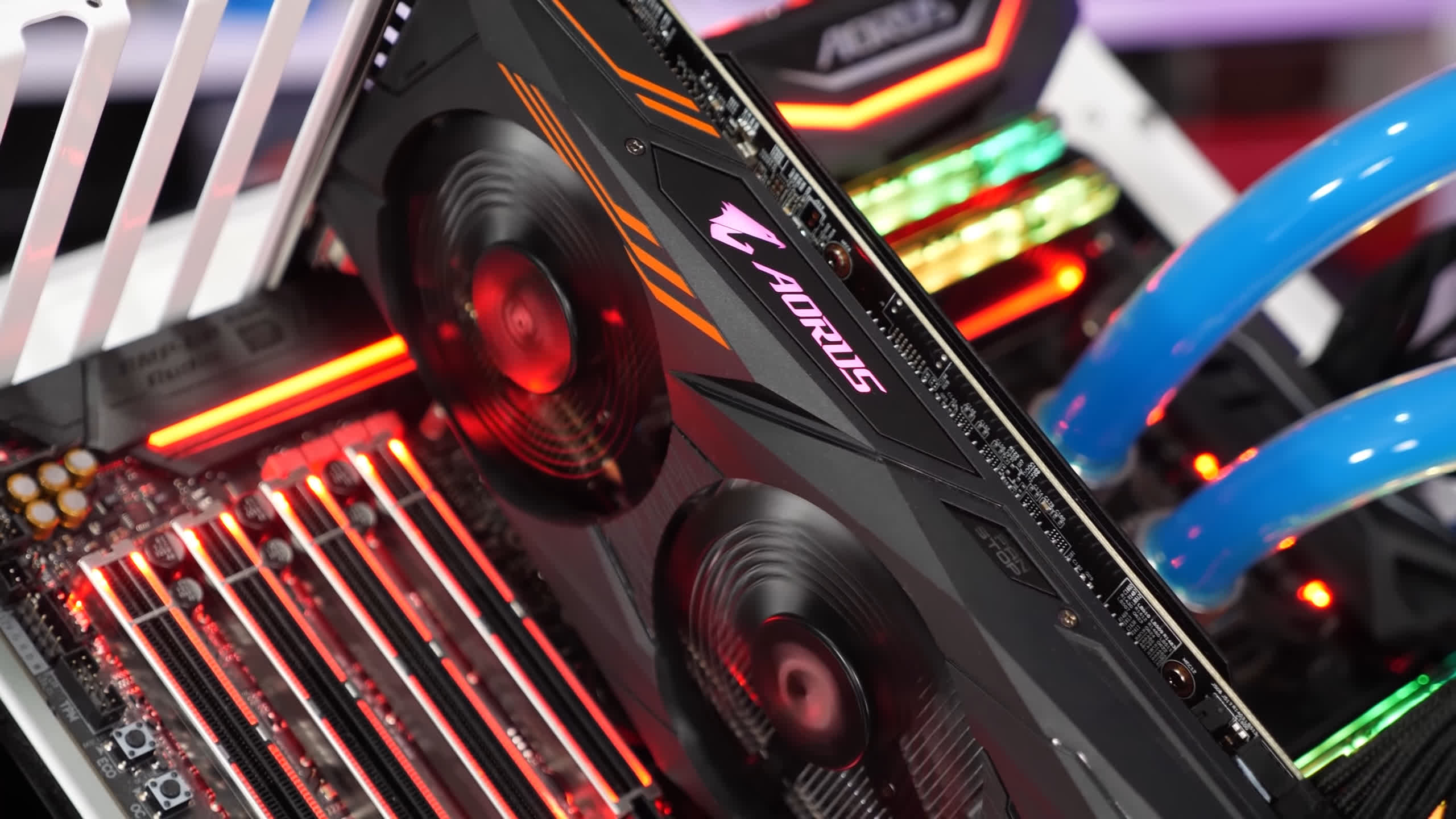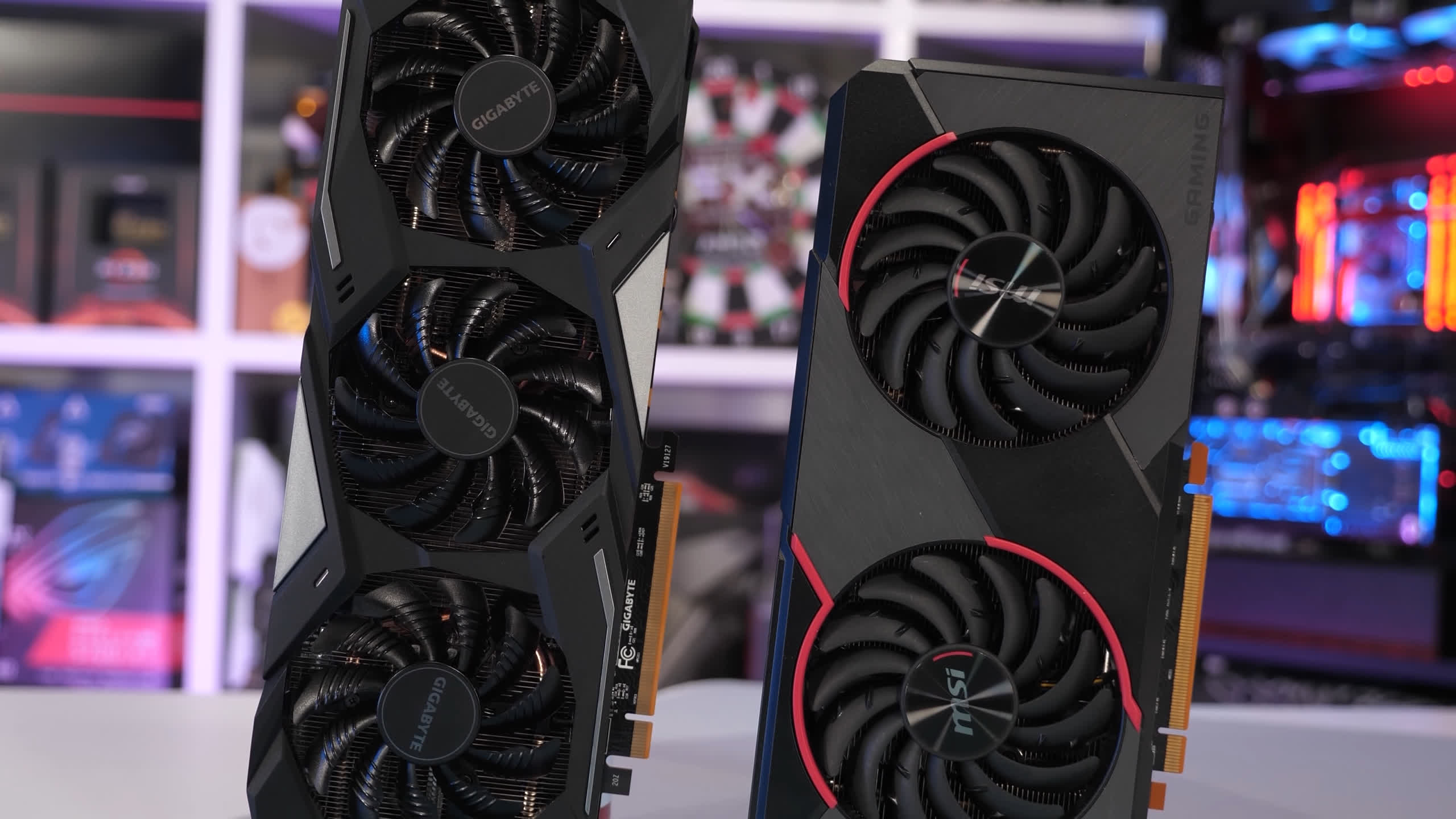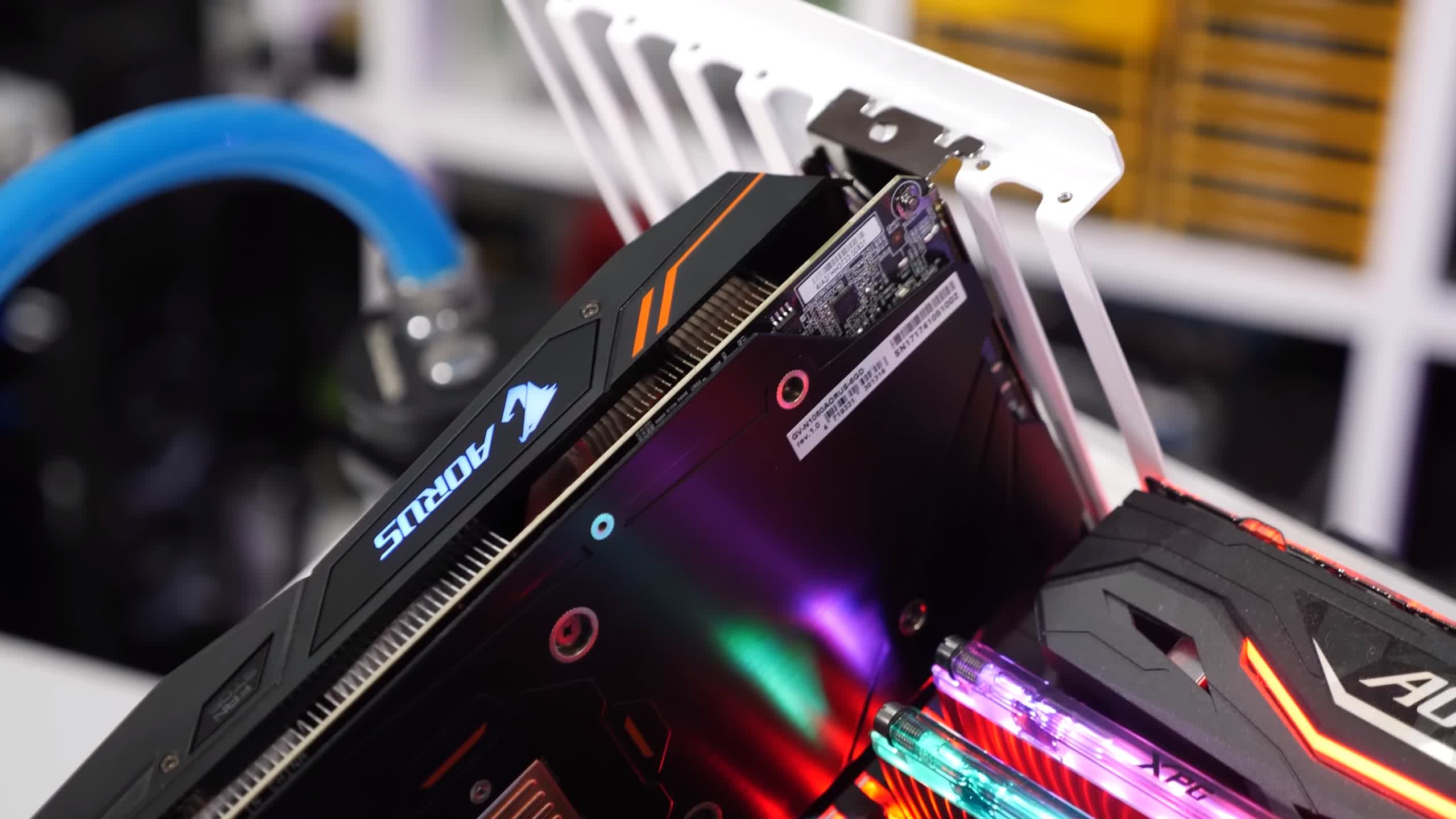A few weeks back we looked at the old Radeon RX 580, to see how it performs in today's games at 1080p and 1440p. It was great to see this 2017 mid-range GPU hanging in surprisingly well, as it didn't take much to achieve highly playable performance.
The big issue with GPUs today is of course pricing and availability. Months ago we started recommending the RX 580 as an alternative to spending over $1,000 on a new and heavily scalped Ampere or RDNA2 product. The Radeon RX 580 could be had for ~$300 on eBay used, and although that's roughly twice what you might have paid for a new one just a year prior, we're living in very different times.
Sadly, a Radeon RX 580 8GB at $300 is now a dream as most sell for between $400 and $500. Alternatively, for just shy of $300, you can still get 4GB versions of the RX 580 which will deliver the same level of performance shown with the 8GB model, provided you don't exceed the VRAM capacity and you can avoid this where necessary by tuning down texture quality, to name one setting.
Another good alternative for a similar price is the GeForce GTX 1060 6GB. These graphics cards are currently selling on the second hand market for ~$300. You get a little more VRAM than an affordable RX 580, and performance should be similar. We thought it made sense to revisit the GTX 1060 6GB as we did with the Radeon earlier on, so here we are to see how this oldie plays current generation games.
Over the years we've tested the GTX 1060 numerous times, and so we're going to assume you all know what the deal is with this GeForce model at this point. We'll skip over specs or bang on about the history of this product. We're looking at it from a "make do" type situation... is it a potential good buy in 2021 while you wait for current-gen GPUs to come down from their ridiculous margins over MSRP?
To answer that question, as was the case with the Radeon RX 580, this isn't a head-to-head benchmark comparison as we're simply interested to see how the GTX 1060 6GB handles a range of new or popular games using low, medium, and high quality settings.
We've tested 17 games at 1080p and 1440p using those three quality presets. Our test bench was equipped with a cool Ryzen 9 5950X using 32GB of DDR4-3200 CL14 memory, so the results are going to be entirely GPU limited. Let's get into it...
Gaming Benchmarks
We'll start off by looking at performance in Assassin's Creed Valhalla. This AMD sponsored title tends to perform better with Radeon GPUs, though the GeForce GTX 1060 6GB still does very well and can deliver a decent experience using the medium quality settings at 1080p with a 59 fps average.
If that's not enough, the lowest preset will allow for 70 fps and that's not much slower than the 75 fps the RX 580 produced.
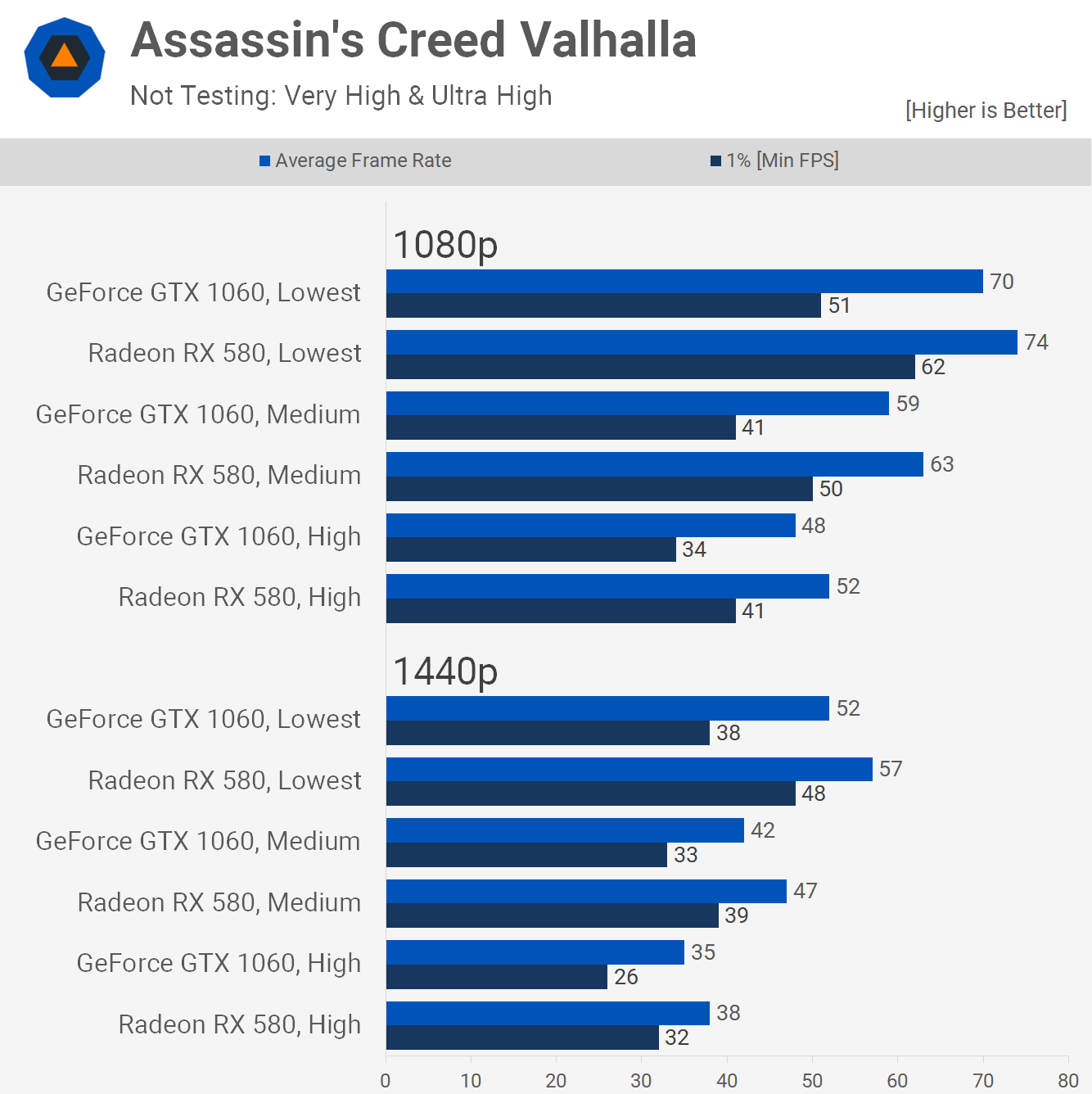
For 1440p gaming you'll probably want to go with the lowest quality preset and even then you won't be treated to a 60 fps experience. Still, I think given this GPU's age, the performance is quite good.

Older GPUs remain very usable for most esports-type games, so competitive titles like Rainbow Six Siege. Although the GTX 1060 is much slower than the RX 580 here, you can still enjoy a high refresh rate experience at 1080p using the high quality preset.
Even at 1440p, you're looking at over 60 fps at all times and it's possible to push over 100 fps using the lowest quality preset. For these games a second hand GTX 1060 offers a lot of value.
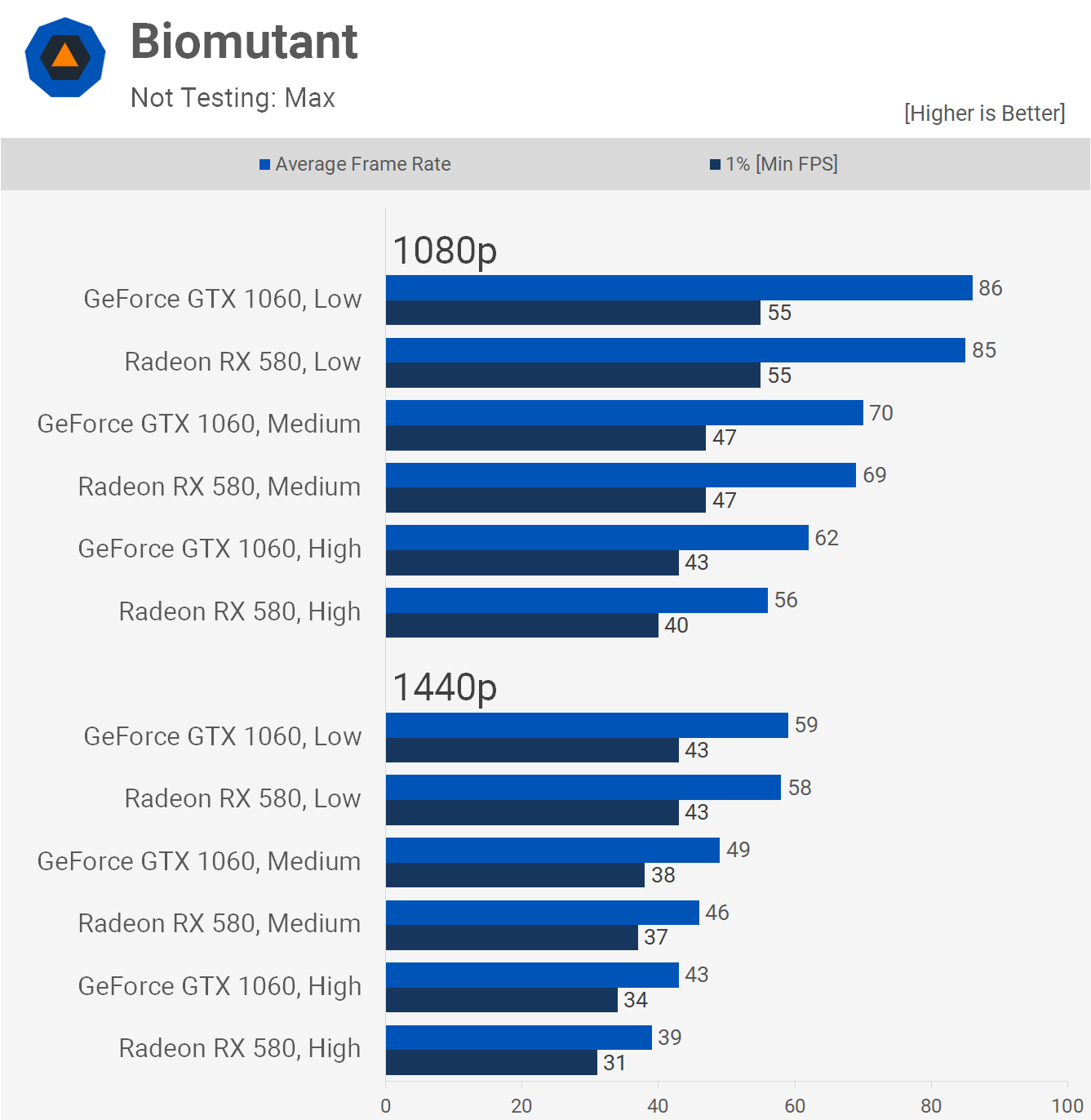
Biomutant is a new game that's visually impressive, even using the lower quality settings. Performance of the GTX 1060 6GB was excellent, matching or exceeding the RX 580. Even with the high quality preset you'll be able to achieve 60 fps at 1080p, and then push well beyond that with the medium and low quality presets.
At 1440p you're still in for a 60 fps-like experience using the low quality preset, so that's a great result given how great the game looks.
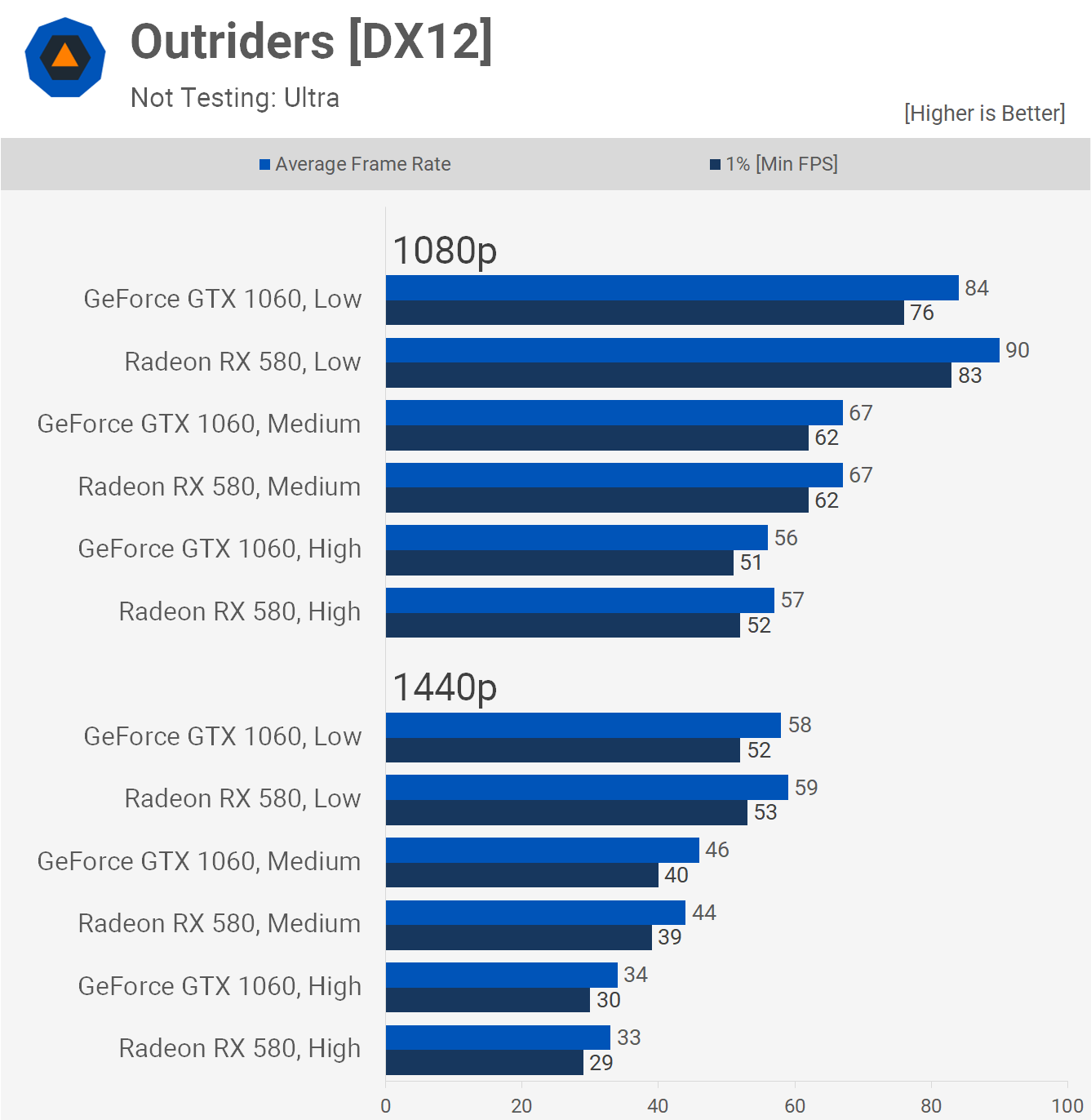
Outriders is another new game that we decided to test. Again, the GTX 1060 is very close to the RX 580. With the medium quality settings the game looks great and at 1080p you'll be looking at just over 60 fps, or over 40 fps at 1440p.
The game runs silky smooth using the low quality preset and still managed to look surprisingly good. Overall, playing Outriders on the GTX 1060 6GB was an enjoyable experience.
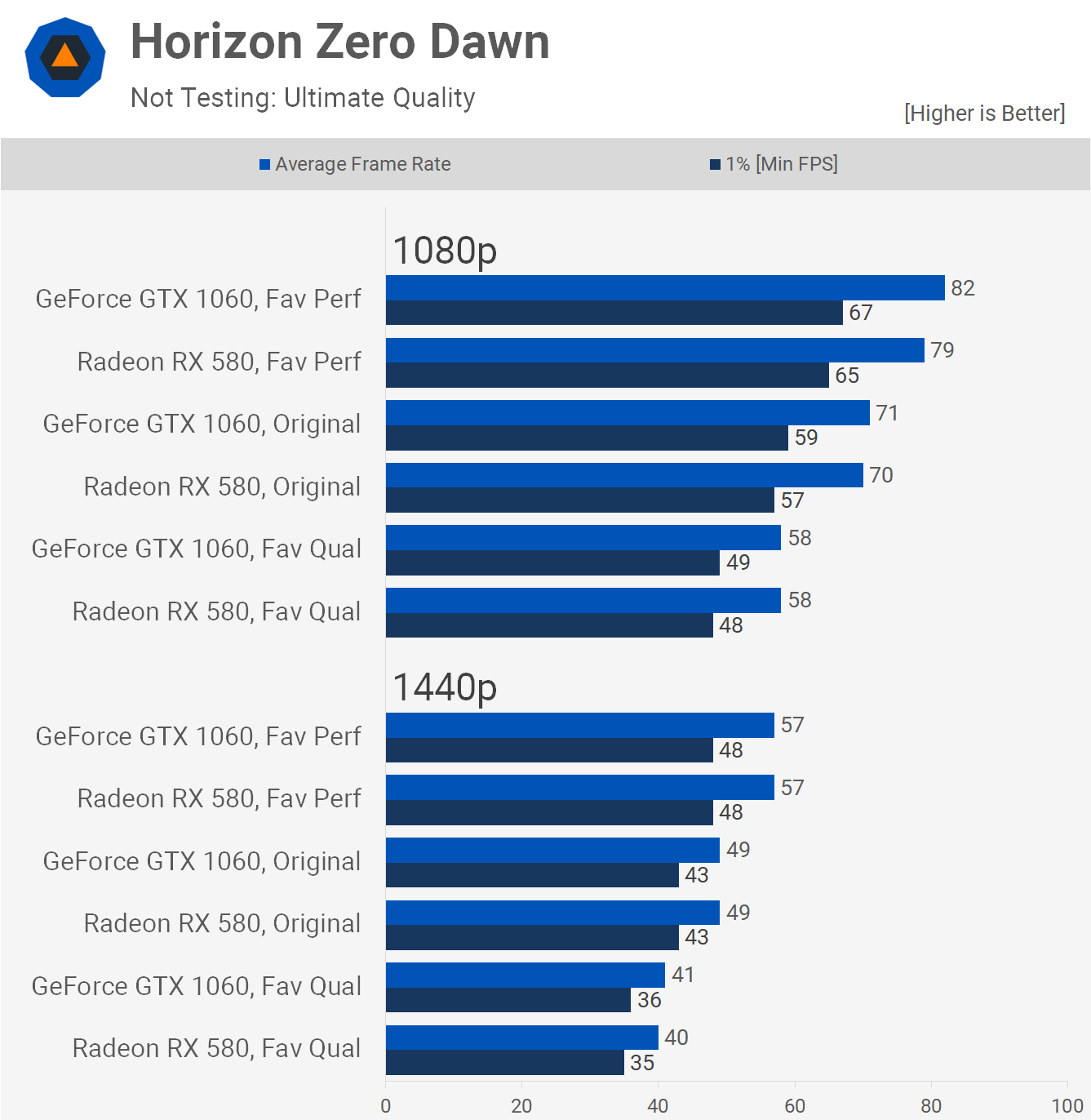
Moving on to Horizon Zero Dawn, we're looking at very similar performance between the GTX 1060 and RX 580. This meant the 1060 was able to deliver highly playable performance at 1080p using the second highest quality preset, labeled as favor quality.
But this is another game that looks great even when dialed down a bit, and I've found visuals are still excellent with the 'original' quality preset. This allowed for 71 fps at 1080p and 49 fps at 1440p.
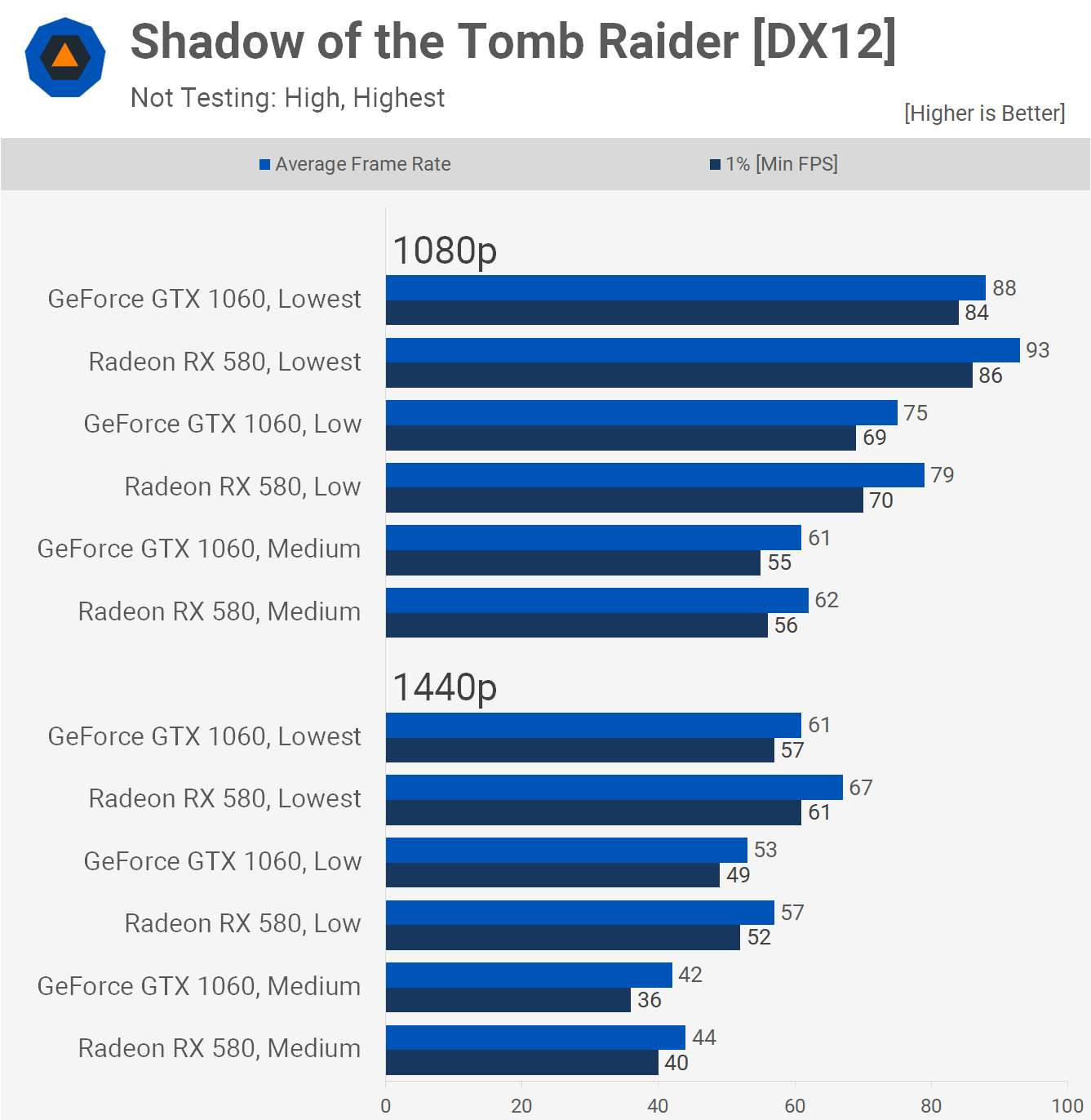
The GTX 1060 isn't quite as punchy as the RX 580 in Shadow of the Tomb Raider, though they are comparable with the medium quality preset. The 1060 does drop off a little when using the low and lowest settings, but even so we're talking about 75 fps on average at 1080p using low, and 88 fps with lowest, so a good experience overall.
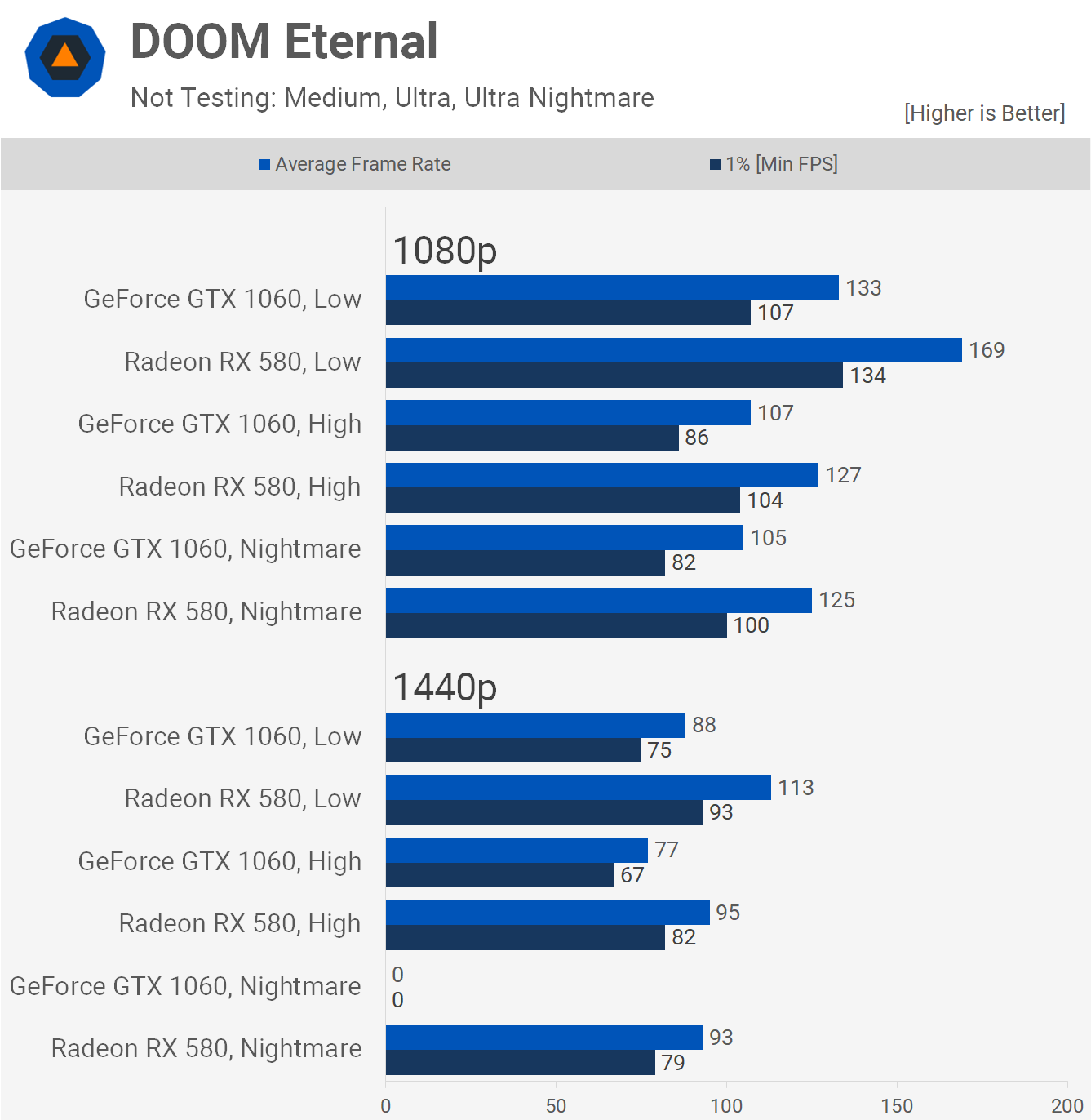
Doom Eternal is an exceptionally well optimized game and as a result these older mainstream GPUs work a treat. The GTX 1060 is slower than the RX 580 overall, but even so manages over 100 fps at 1080p using the nightmare settings.
Then at 1440p, it averaged 88 fps using the low preset and 77 fps with high, but was unable to use the nightmare settings without tweaking texture quality, due to the more limited 6GB VRAM buffer.

The RX 580 and GTX 1060 deliver comparable performance in Death Stranding. The 1060 was slightly slower in some instances, but overall performance was excellent.
We're talking well over 60 fps at 1080p using the default quality preset, which can be thought of as a high quality setting. Even at 1440p, performance was impressive and certainly very playable with the default quality preset.
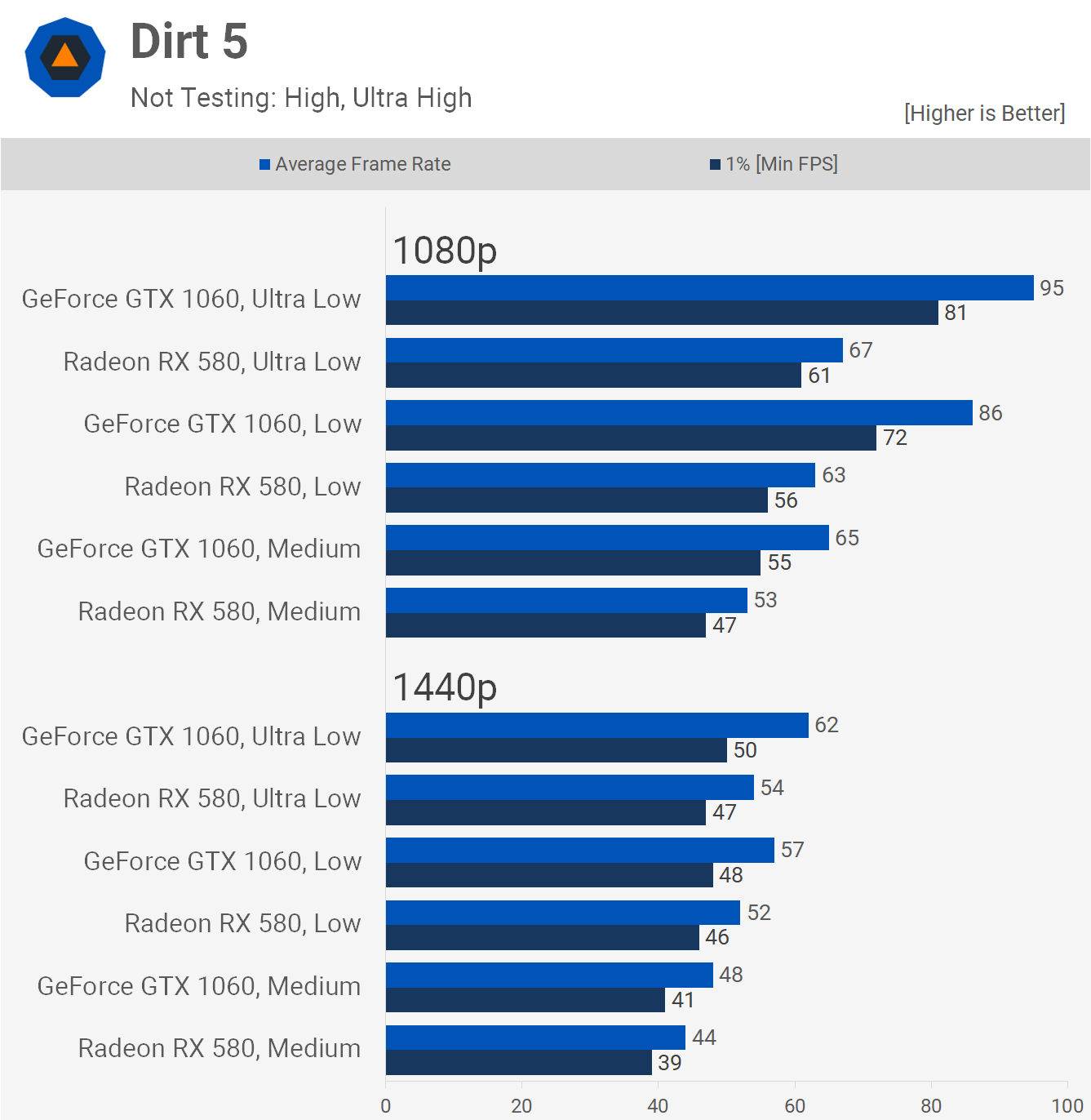
The Dirt 5 results are strange and rather unexpected. As an AMD sponsored title you'd expect the RX 580 to run away with it, but here the opposite is true. Under all conditions the GTX 1060 was faster and sometimes much faster as seen when testing with the ultra low and low presets at 1080p.
Thus, Dirt 5 is an excellent title for the GTX 1060. With the medium quality preset, which looks excellent by the way, the GTX 1060 6GB spat out 65 fps on average. The low and ultra low results at 1080p are surprising. I went back and tested both models to verify this data. It seems there is some kind of bug on AMD's side that's heavily limiting the performance of the RX 580 under these test conditions and as a result the GTX 1060 was up to 42% faster.
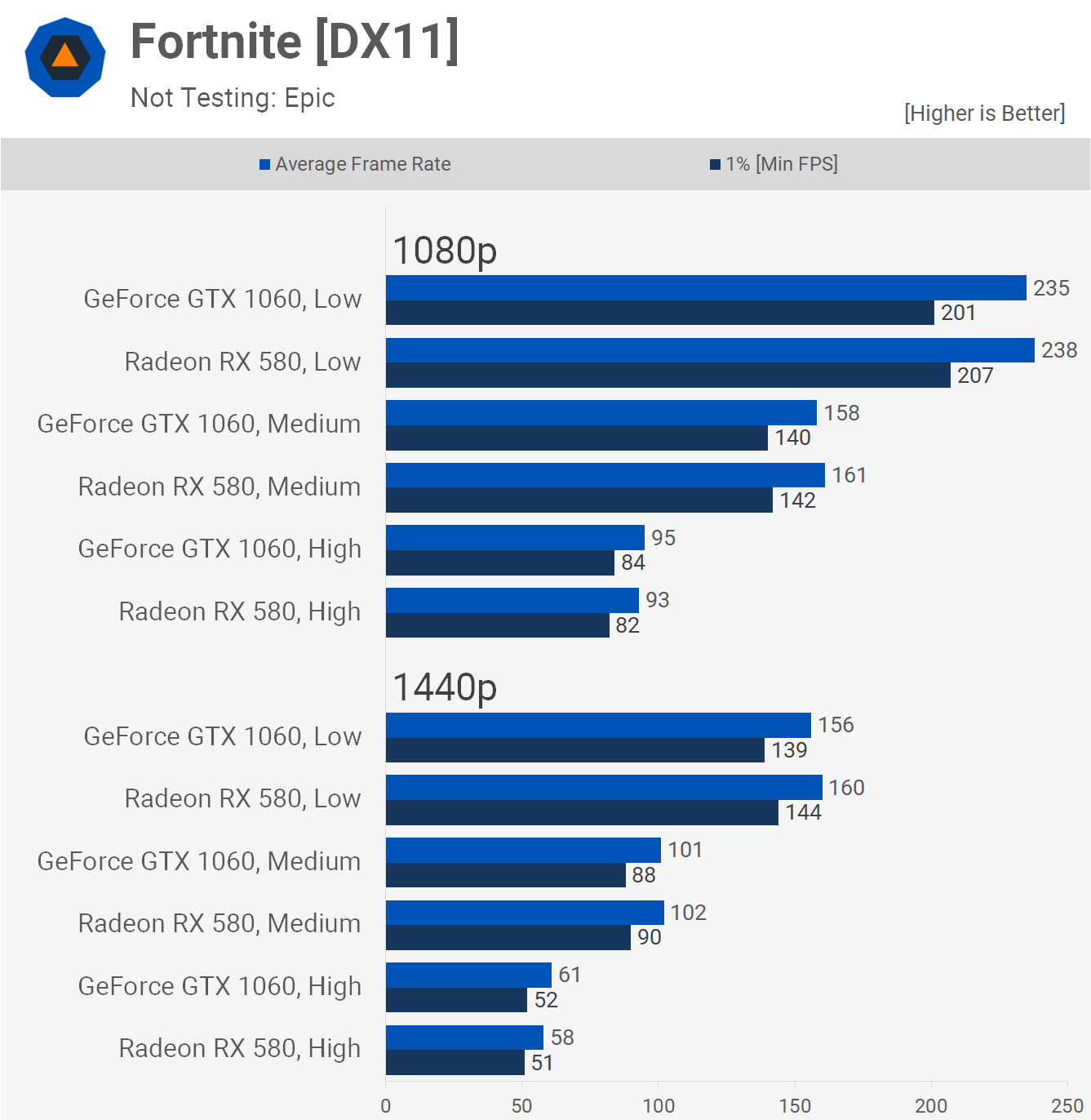
The Fortnite data is rather boring, but in a good way if that's a thing.
The RX 580 and GTX 1060 are tightly matched here, and performance was excellent. Using the medium settings, which is what most Fortnite players use for a competitive advantage, the GTX 1060 was good for 158 fps on average at 1080p and then 101 fps at 1440p. Both are highly playable and enable an enjoyable gaming experience.
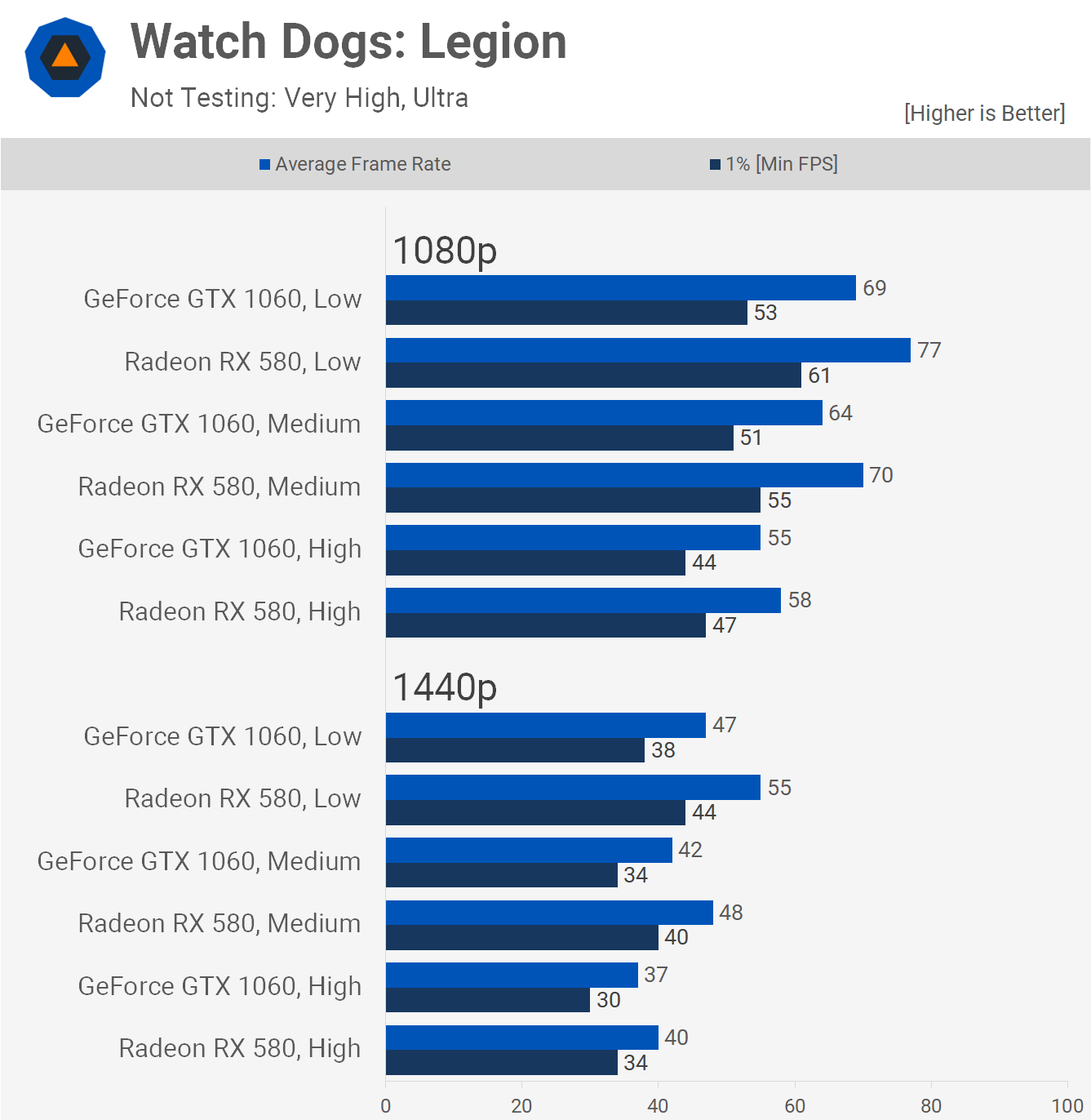
Watch Dogs: Legion is an Nvidia sponsored title, so you might expect the GTX 1060 to have the edge here. But that wasn't the case. It seems as though old Nvidia GPUs work best in AMD sponsored titles, while AMD GPUs work best in Nvidia sponsored titles, who knew.
The GTX 1060 averaged 64 fps at 1080p using the medium quality preset, so it's certainly good enough to enjoy the game, and even with the high setting you're still looking at 55 fps on average. All that said, 1440p is a bit of a stretch with just 47 fps on average using the lowest quality preset.
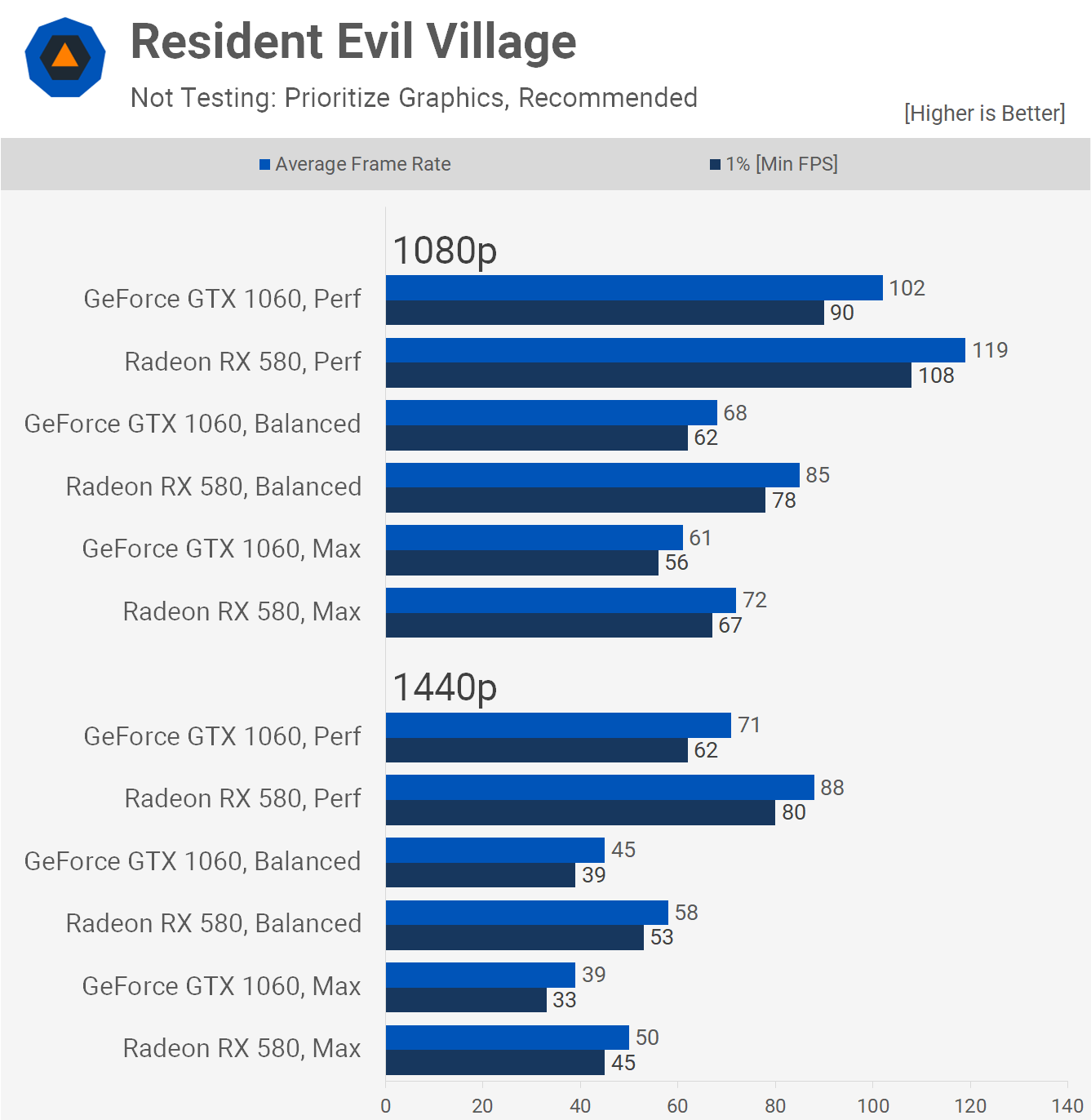
Resident Evil Village is yet another brand new game release we tested. This one played significantly better with the Radeon GPU, though the GTX 1060 was still able to deliver highly playable performance at 1080p using the maximum preset. It was just 15% slower than the RX 580, and 20% slower using the balanced preset.
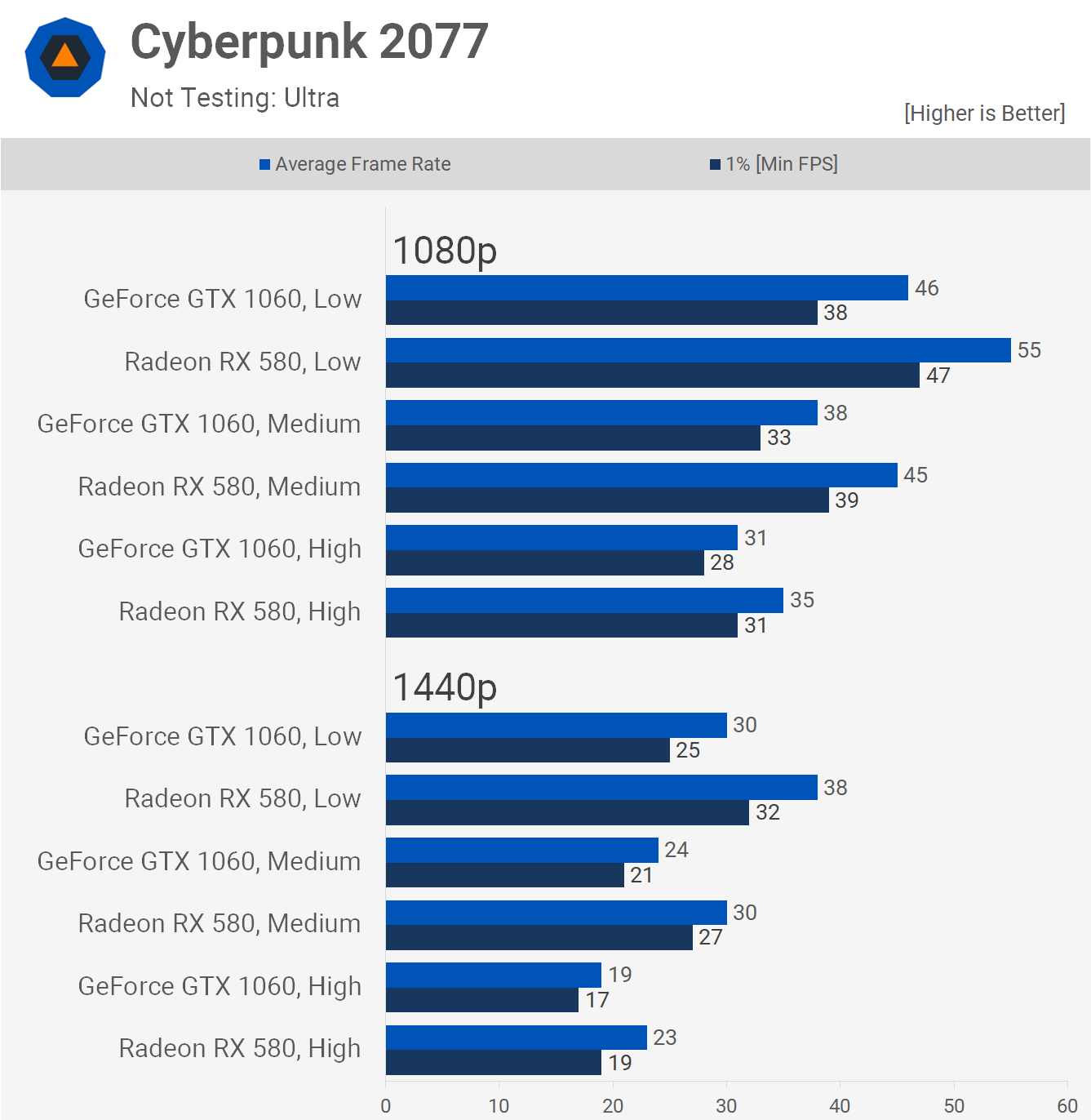
The only game you probably can't really enjoy that well with the GeForce GTX 1060 6GB is Cyberpunk 2077. We're looking at just 46 fps on average at 1080p using the lowest possible quality settings.
Cyberpunk 2077 is not the most well optimized title, so these results are hardly surprising. The RX 580 also struggled, though it was 20% faster and that difference was very noticeable.
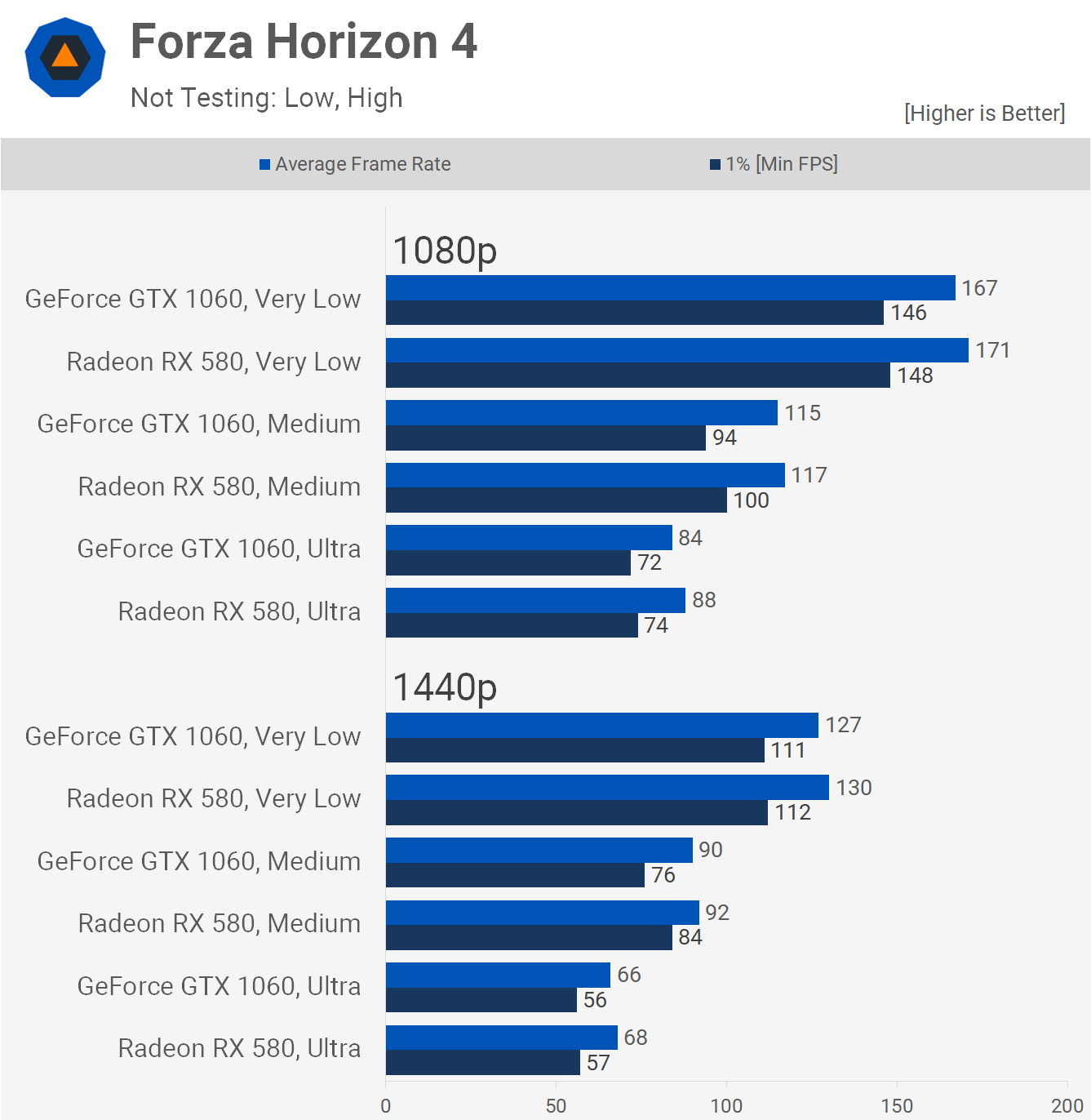
Forza Horizon 4 is a good example of a well optimized game, the visuals are breathtaking and while it certainly can't be compared to Cyberpunk 2077 as they're entirely different games with very different hardware requirements, Forza still looks great and is a ton of fun.
The GTX 1060 spat out an insane 167 fps at 1080p using the lowest quality preset, 115 fps with medium, and impressively 84 fps using ultra. Even at 1440p the ultra preset still allowed for 66 fps.
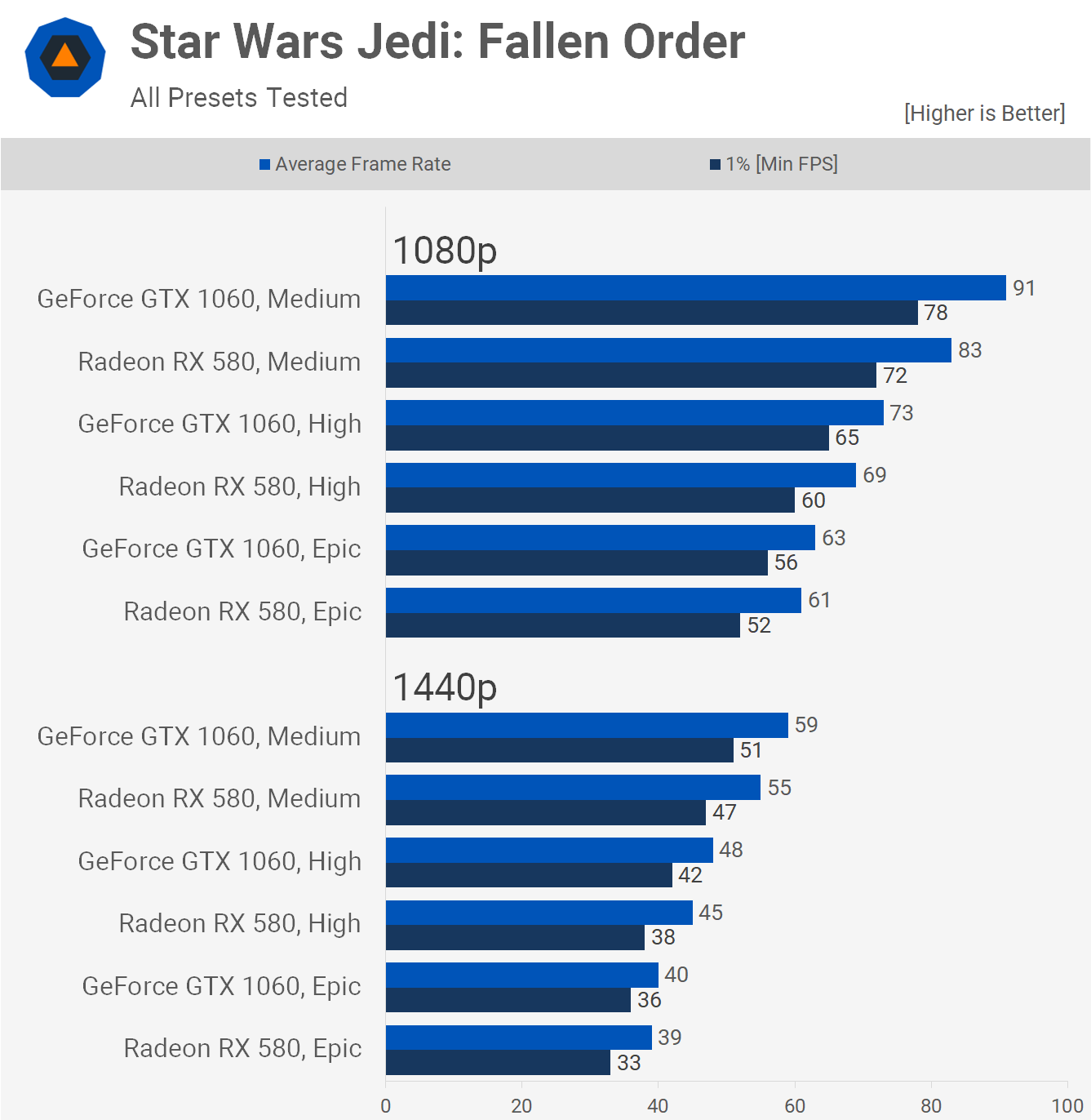
Star Wars Jedi: Fallen Order plays better with the GTX 1060 and as a result we're almost getting 60 fps at 1440p using the medium quality preset. Dropping down to 1080p allows for a 60 fps experience using the maximum in-game quality preset, while 'high' allows for over 70 fps. The GTX 1060 is more than capable of delivering highly playable performance in this title using a respectable level of visual settings.

The second last game tested is F1 2020 and here the GTX 1060 is slightly slower than the RX 580, though that's not too much of an issue as we're pushing over 60 fps in almost all test conditions. For example, at 1080p we're looking at 75 fps on average using the maximum quality preset called "ultra high," then 132 fps with medium and 160 fps using low.
Then at 1440p, it's still possible to render 105 fps on average using ultra low, 89 fps with medium, and then 55 fps with ultra high, so another solid gaming experience here.
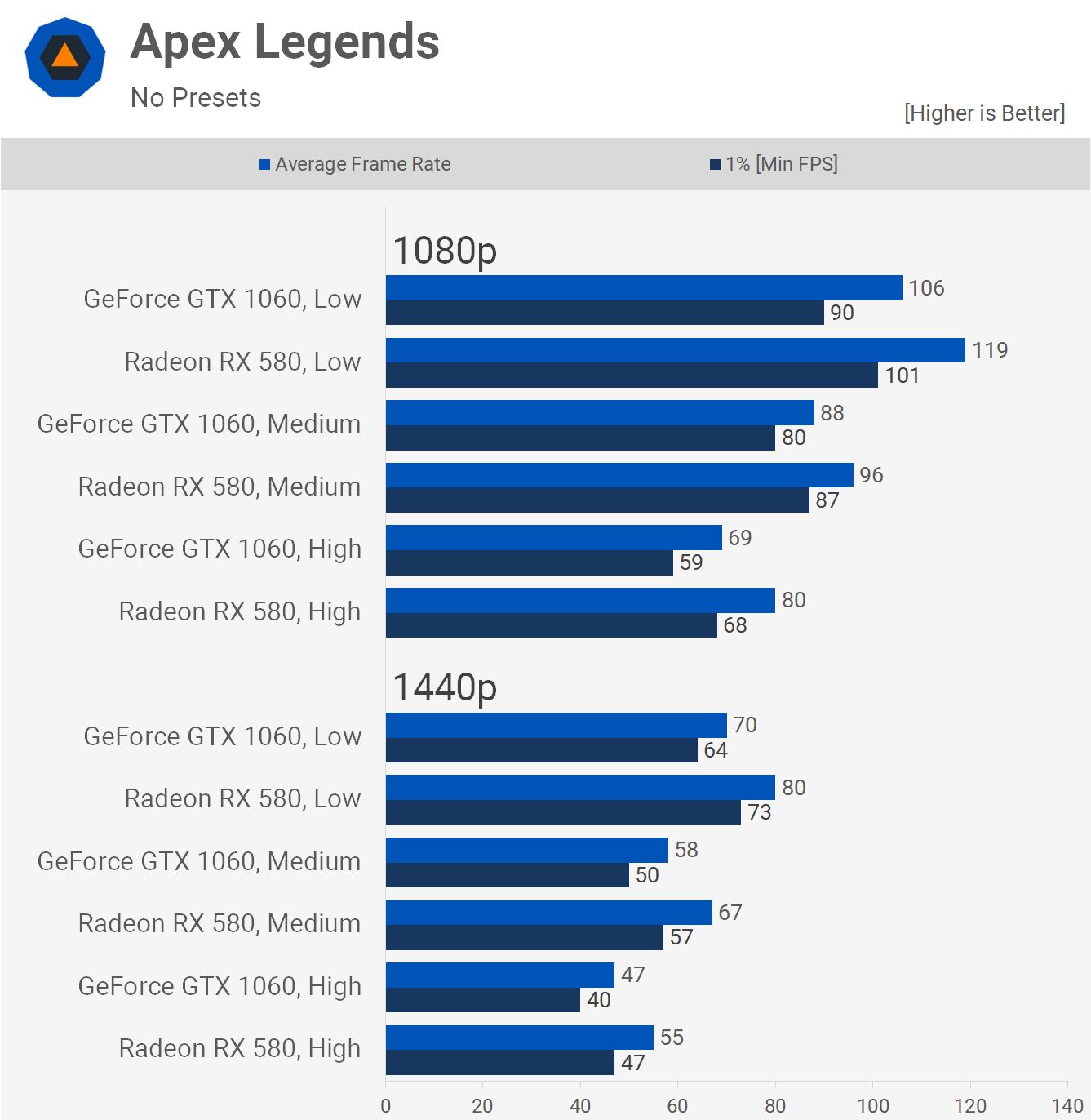
Apex Legends results really surprised us. Last time we tested Apex with these GPUs, which was probably about a year ago, the GTX 1060 was slightly faster than the RX 580. But using the latest version of the game with an entirely new map, and of course, newer drivers, the RX 580 came out on top and by a respectable ~15% margin.
The GTX 1060 delivered very playable performance under most test conditions with 69 fps at 1080p using the high quality settings, 88 fps using medium settings, and then 106 fps when running with the low quality settings.
As expected, 1440p was a bit more challenging, but even so it's possible to receive around 70 fps on average using the low quality settings.
Average Performance
Here's a quick look at the 17 game average because although this isn't really meant to be a head-to-head comparison, I know many of you will want to see this graph.

At 1080p we see that the RX 580 is ~4-5% faster, and that's just what we found a year ago when we compared the two in over 30 games. The margin does widen at 1440p, using the low and medium settings the RX 580 was on average 7% faster, and then 11% faster using high. The difference in VRAM capacity is no doubt having an effect on those results.
Hot or Not?
The GeForce GTX 1060 6GB is still surprisingly punchy in 2021. For roughly $300 on the second hand market, that's about $50 more than what these cards sold for when new in mid-2016. That's obviously not a great deal today, but if you're in need of a graphics card to enjoy some PC gaming, then this is a cost-effective option by today's standards.
To be clear, we're not recommending anyone race out and drop $300-ish dollars on an old GeForce GTX 1060 6GB. The truth is, I don't have a good option for you, no one does. But if spending well over $1,000 on an RTX 3070 or $800-$900 on an RTX 3060 is out of the question, and frankly it is in our opinion, then a make do option like a second hand GTX 1060 6GB is an alternative, and it's one that'll see you lose less money in the long run.
By the way, if you don't care about texture quality because you play games like Rainbow Six Siege or Fortnite, then the 3GB GTX 1060 might be a better option for you. Those graphics cards often sell for ~$100 less and will deliver a similar level of performance assuming you keep game assets under the VRAM limit.
On a final note, a few people were upset about our use of the Ryzen 9 5950X test system for the RX 580 benchmarks, claiming it was inflating GPU performance and giving unrealistic expectations. I'd just like to point out that this isn't the case, even with a much lower end CPU such as the Ryzen 5 2600 as an example, in almost all of these tests you'll still be heavily GPU limited, because the RX 580 and GTX 1060 aren't very powerful.
That said, if you're not limited by these 5 year old mid-range GPUs, well I've got good news for you: don't stress about a GPU upgrade as you're in desperate need of a CPU upgrade and right now they're much cheaper and easier to buy.
We always test GPU performance without a CPU bottleneck, because CPU limited data for a graphics card evaluation becomes rather useless very quickly. Having said that, there is the matter of driver overhead, and it's true that the GTX 1060 will require more CPU power than the RX 580 due to the architectural differences between them, but testing for that is a completely different content piece.
